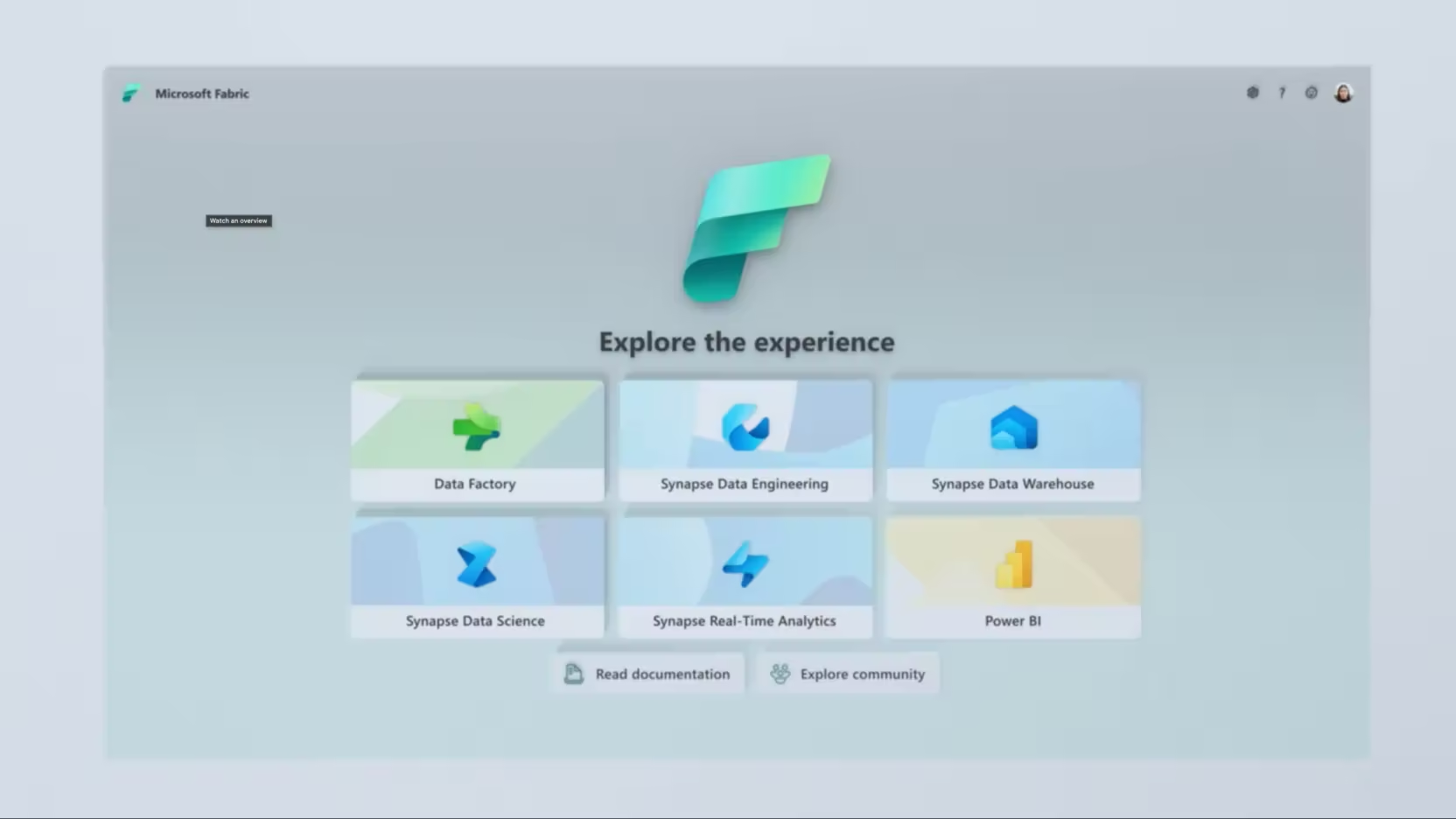From Data Chaos to Clarity

As 2024 winds down, let’s take a step back and admit it—this year has been nothing short of a data hurricane. The pace of change has been relentless, shaking up the way businesses think about their data strategies. Heading into 2025, the challenge is no longer about having enough data; it’s about making sense of it all. And for businesses feeling stuck in the storm, Microsoft Fabric is shaping up to be the compass they’ve been waiting for.
If you’ve ever found yourself buried in spreadsheets, struggling to connect fragmented tools, or pulling late nights trying to wrangle insights out of disorganized systems, you’re not alone. It’s chaos out there. But here’s the thing—Microsoft Fabric isn’t just another platform; it’s a game-changer.
Microsoft Fabric: Your Secret Weapon for 2025
Picture this: A single platform that combines AI, analytics, integration, and usability into one cohesive ecosystem. That’s Microsoft Fabric. It’s the Swiss Army knife of data platforms—versatile, efficient, and built to solve the problems that have plagued businesses for years.
What makes Fabric so essential is its ability to break down silos. In 2024, most companies juggled a dozen disconnected tools, each solving a narrow problem. Fabric flips that script. It brings everyone—data engineers, analysts, decision-makers—into one unified space.
But Fabric isn’t just reacting to today’s mess. It’s looking ahead, building for the data trends that are already reshaping the analytics landscape in 2025.
Four Key Analytics Trends Microsoft Fabric is Owning in 2025
1. Hybrid Analytics is the New Normal
Let’s face it—no one’s ditching their legacy systems overnight. And yet, businesses can’t afford to operate in fragmented environments anymore. Enter hybrid analytics: a balance between on-premises systems and cloud-powered tools.
Microsoft Fabric shines here, acting as the bridge that connects your old systems with the cloud and AI-powered analytics. This isn’t just a convenience; it’s survival. For organizations still tied to legacy tech, Fabric offers a way to modernize at their own pace without sacrificing efficiency.
2. Data Governance is a Non-Negotiable
Trust is the name of the game in 2025. With stricter regulations (hello, GDPR and CCPA) and growing demands for transparency, businesses need rock-solid data governance strategies. Fabric doesn’t just help—it leads.
By integrating seamlessly with Azure Purview, Fabric lets organizations catalog, track, and secure their data with ease. It’s not just about staying compliant; it’s about being able to prove it. In an era where customers and regulators demand clarity, Fabric ensures your data is accurate, accessible, and secure.
3. Collaboration is the Key to Winning with Data
Gone are the days of analysts and engineers working in separate bubbles. In 2025, analytics success will depend on collaboration between coders, decision-makers, and everyone in between.
Microsoft Fabric was built for this. Its unified platform creates a shared workspace where teams can build pipelines, run models, and create dashboards side by side. It’s more than a nice-to-have—it’s the foundation for tackling big, complex projects.
4. Data for Everyone: The Rise of Democratized Analytics
Here’s what’s exciting about 2025: Data analytics is no longer just for the tech-savvy. Low-code tools and AI-driven automation are making analytics accessible to everyone.
Fabric is at the forefront of this shift. It empowers even non-technical users to dive into data, build reports, and contribute to decision-making—without needing to call IT every five minutes. And for businesses, this isn’t just a trend; it’s a competitive advantage.
Why Microsoft Fabric Matters More Than Ever
Let’s be real—2025 isn’t going to slow down. If anything, it’ll demand even faster, smarter decisions. That’s where Microsoft Fabric stands out. It’s not just a tool to help businesses survive the chaos of today; it’s a solution to help them thrive in the future.
So, what’s next? Here’s what to watch as Fabric continues to evolve:
- Generative AI Integration: Expect to see features like natural language querying and automated insights become even more powerful.
- Industry-Specific Applications: From healthcare to retail, Fabric will continue to expand its reach.
- Predictive and Prescriptive Analytics: Businesses will move from understanding what happened to predicting what will happen—and knowing exactly what to do about it.
Final Thoughts
Let’s cut to the chase: The data world is only going to get messier in 2025. But with tools like Microsoft Fabric, businesses can finally turn the chaos into clarity.
As the year comes to a close, leaders should ask themselves one question: Are we ready for what’s next? Because those who adopt platforms like Fabric won’t just keep up with the trends—they’ll be the ones setting them.